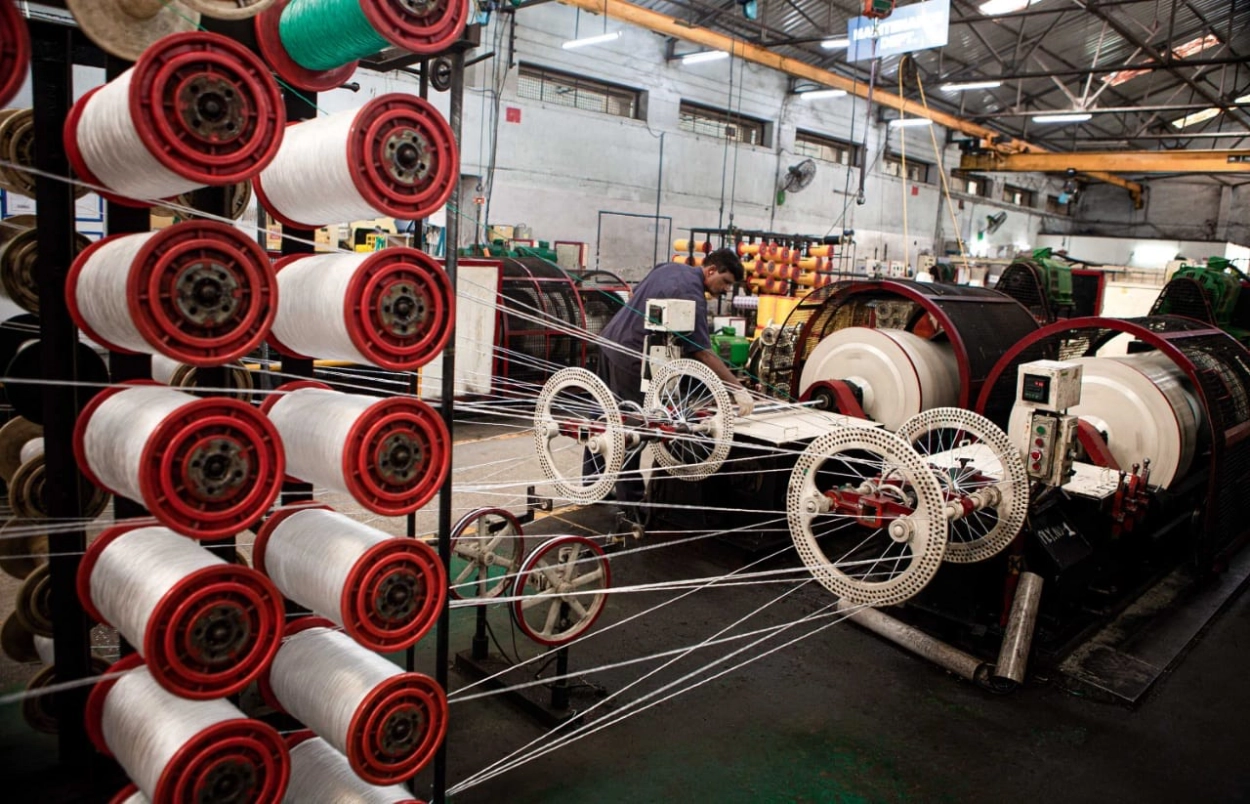For the last couple of years, the Indian textile industry has been scaling new heights both in terms of its production and its contribution to the national economy. Valued at over $103.4 billion in 2020, it is projected to reach $190 billion in the next three years. One of the main reasons to account for this exponential growth is the rapid increase of the production of technical textiles in India.
Technical textiles can be defined as functional fabrics that have specific applications across various industries including automobiles, civil engineering and construction, agriculture, healthcare, and industrial safety to name a few. Since they are designed and used for a non-decorative purpose, demand for these is usually produced because of either development and expansion, or industrialization in the country. In order to be functional and serve a purpose, they are often incorporated with qualities like anti-bacterial, anti-static, chemical resistant, flame retardant, odor repellent, etc.
Types of Technical Textiles
Depending upon their usage, these textiles can be classified into 12 distinct categories given below:
- Meditech: including diapers, sanitary napkins, disposables, contact lenses, artificial implants
- Mobiltech: airbags, helmets, nylon tire cords, airline disposables
- Oekotech: recycling, waste disposal, environment protection
- Packtech: wrapping fabrics, polyolefin woven sacks, leno bags, jute sacks
- Protech: bulletproof jackets, fire retardant apparel, high visibility clothing
- Sportech: sports net, artificial turf, parachute fabrics, tents, swimwear
- Agrotech: shade nets, fishing nets, mulch mats, anti-hail nets
- Builtech: cotton canvas, tarpaulins, floor, and wall coverings, canopies
- Clothtech: zip fasteners, garments, umbrella cloth, shoelaces
- Geotech: geogrips, geonets, geocomposites
- Homech: mattresses and pillow fillings, stuffed toys, blinds, carpets
- Indutech: conveyor belts, vehicle seat belts, bolting cloth
The effect of the pandemic on production
Over the last three years, especially during the pandemic, production of technical textiles has boomed such that it accounts for 13% of India’s total textile and apparel market, and contributes 0.7% to India’s GDP. One of the main reasons for this was the pandemic when the ban on the export of critical medical equipment like PPE kits and N-95 masks was banned, and because of this, India was compelled to increase its meditech production substantially. This has also been enabled at the policy level, which has encouraged market development, market promotion, international technical collaborations, investment promotions, and the Make in India initiative.
In order to turn this critical moment into an opportunity, big textile players like Reliance, Trident Group, KPR Mill Limited, Bombay Dyeing, and Garware Technical Fibers have stepped up to address and fill this gap between requirements and production. While this was in response to the Covid-19 pandemic, much of India’s production of technical textiles otherwise is limited to small-scale segments such as canvas tarpaulin, zip fasteners, stuffed toys, fabrication of awnings, canopies, blinds, etc.
The way forward
For all intents and purposes, it is quite important that this momentum and the rise in production be retained. In this context, the aim is to achieve an average growth rate of around 15–20% so as to increase the domestic market size of the technical textile industry to $40–50 billion by 2024. In order to do so, the government has taken several initiatives to boost the technical textile market in India. Some of these include the introduction of the HSN (or the Harmonized System of Nomenclature) for Technical Textile, which help in monitoring the data of import and export; the launch of Technotex India, a flagship event organized by the Ministry of Textiles in collaboration with the Federation of Indian Chambers of Commerce and Industry, that organizes exhibitions, conferences, and seminars; and the establishment of the National Technical Textiles Mission, which aims to position the country as a global leader in technical textiles.
The main objective of these initiatives is to tap into the immense potential that the textile industry has in the form of technical textiles. The technical textile industry is still in the early stages of its development and has the capacity for rapid growth over the next couple of years. With industrial backing, rapid development that creates demand, and the government policies that promote the production and distribution of technical textiles, technical textiles are indeed poised to be the future of the textile sector in India.
